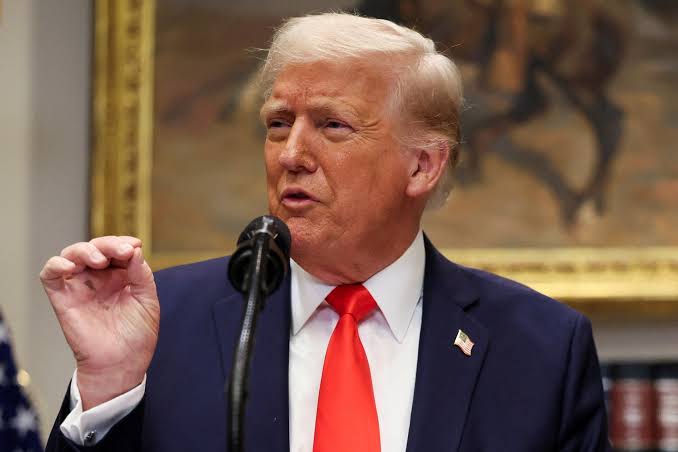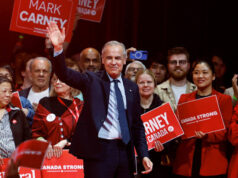Trump trumpeting on reciprocal tariffs on India will Trip him badly

Trump’s decision to impose reciprocal tariffs on India is going to be his his biggest mistake in the coming times.
He may be a great business but now he is dealing with an Indian that too from the state of Gujarat where business flows in the very veins.
Trumps stance will now mark a significant shift in the trade dynamics between the two nations.
While the move aligns with his America First policies, it also introduces a direct confrontation with India First policy of Modi.
Thus there will be new challenges for American consumers, and the bilateral trade agenda. Poor American consumers will be overall losers.
From April 2, it has to be seen how both Washington and New Delhi navigate the economic and diplomatic repercussions.
In the coming months the two nations should find common ground through negotiations otherwise Trump can be sure of facing a prolonged trade standoff.
American consumers will be the worst sufferers. Trump now has to work hard to strike a balance between national economic interests and the goal of fostering a robust US-India trade partnership.
Rather the issue of reciprocal tariffs had been raised by Prime Minister Narendra Modi himself during the Trump – Modi meet in Washington last month.
New Delhi has been doing its homework and already prepared detailed fact sheets on existing import duties affecting major US industrial goods exported to India.
It is obvious that despite diplomatic discussions, Trump’s administration is trying to act smart with its plans, signalling its intent to enforce stricter trade policies globally. Well India is in a position to give it back in a nice in proper manner.
Both the US and India had committed to expanding their bilateral trade relationship, with an ambitious target of reaching INR 425 0000 Crores ($500 billion USD) in trade volume by 2030-more than double the current trade levels.
To facilitate this, the two nations had vowed to finalize the first phase of a Bilateral Trade Agreement (BTA) by the fall of 2025, to address existing trade barriers and create a more balanced economic partnership.
Now the newly trumpted tariffs of Trump threatens to complicate these aspirations. However aggressive trade enforcement, a hallmark of his administration’s economic strategy is not going to work against India.In fact the proposed 25% hike on pharmaceuticals imported into the US could have severe consequences for affordability and access to essential drugs to poor American consumers.
India is a major supplier of generic medicines to the American market, and industry experts warn that such a tariff could drive up the price of medicine, affecting millions of American consumers.
Similarly, the semiconductor industry faces significant disruption. Trump has announced that sectoral tariffs on semiconductor chips would start at 25% or higher, with the potential to rise substantially over the next year.
Given India’s growing presence in the global semiconductor supply chain, these tariffs could impact American tech companies reliant on Indian semiconductor components.
India’s response to the tariffs has been measured but firm. According to officials quoted by Reuters, New Delhi is reviewing its trade and industrial policies to counteract what it perceives as aggressive trade measures from the US and the European Union.
Santosh Sarangi, Head of the Directorate General of Foreign Trade (DGFT), stated, “It’s high time India also looked at our trade and industrial policies comprehensively.”
While India has not yet announced any direct countermeasures, past incidents suggest that retaliation could be on the horizon.
In 2019, when the Trump administration withdrew India’s preferential trade status under the Generalized System of Preferences (GSP), New Delhi responded by imposing higher tariffs on key US exports, including almonds, apples, and medical devices.
If tensions escalate, India could implement similar countermeasures, potentially affecting American agricultural exports and industrial goods.
The Indian government will also seek to strengthen trade alliances with other global partners, including Russia, Middle East, the European Union, China, and Southeast Asian nations, to mitigate the impact of US tariffs.
With the world’s fifth-largest economy, India has the leverage to explore alternative markets and diversify its trade relationships. India also has a vast internal consumer market.
Trump has forgotten that new tariffs come at a crucial time for US-India relations, which have experienced both cooperation and friction in recent years.
While the two nations have expanded defence and technology partnerships, trade remains a persistent sticking point.
The tariffs risk straining diplomatic ties, especially as both countries navigate an increasingly complex global economic landscape.
Additionally, the tariffs could have broader geopolitical consequences. As India continues to position itself as a key player in the Indo-Pacific region, the trade dispute with Washington could influence its strategic calculations.
If economic tensions continue to mount, India may be compelled to reassess its alignment with USA, particularly in areas such as regional security and supply chain resilience.




